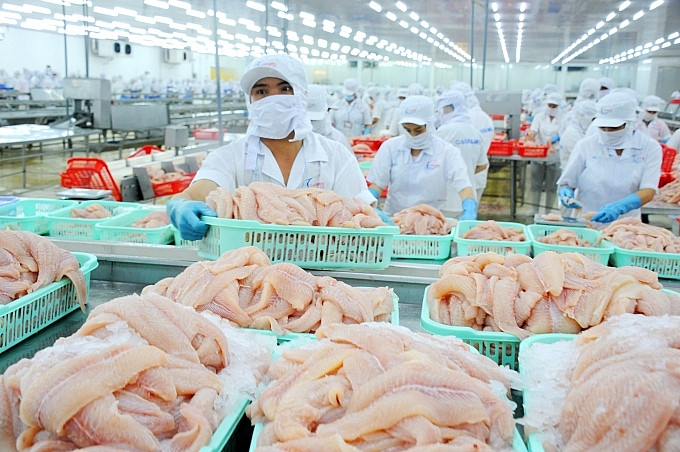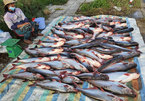 |
|
Tra fish producers are turning to the local market to balance out reduced exports
|
After a sharp decrease in the first half of the year, seafood exports have recently begin a gradual recovery. According to the Ministry of Agriculture and Rural Development, the export turnover of seafood in September 2020 reached $820 million, up 0.6 per cent on-year.
Aggregated for the first nine months, seafood export turnover reached $6.03 billion, down 3 per cent on-year. While this is still a drop, it shows budding recovery as exports were down 14 and 9 per cent in the first and second quarters.
Shrimp exports made up the lion's share of exports with 44 per cent, while the contribution of tra fish dropped to 17.6 per cent.
In a talk with VIR, Pham Minh Thien, CEO of Co May Group, a tra fish exporter based in Dong Thap province, said that the global health crisis has significantly impacted the export-import activities of his company. "Local consumption declined by 30 per cent during the pandemic and the drop in export markets were even worse."
In previous years, China, the US, and the EU were the country's largest tra fish export markets. However, orders from these markets have decreased since the pandemic broke out. In the first seven months, the total export turnover of tra fish to the US reached $133.7 million, down 20.2 per cent on-year.
Meanwhile, as of the middle of August, tra fish exports to China reached $271 million, decreasing by 22.6 per cent on-year, according to the Vietnam Association of Seafood Exporters and Producers (VASEP). This was caused by the interruption of trade, transport, supply chains, as well as the decline of consumption by households, restaurants, and the services sector in most markets. VASEP also warned that if COVID-19 is not controlled soon, seafood exports will fall further in the coming months.
Against this situation, most seafood producers have considered solutions to strengthen exports to markets that have managed to exert control over the pandemic to offset the loss from the US, China, and the EU. The local market is emerging as a good choice to increase consumption while other markets rebound.
Thien from Co May Group said that all businesses are expanding markets, along with developing a high-quality tra fish brand, as well as connecting deeper with consumption channels like trade centres, supermarkets, and restaurants.
"We would like to promote the domestic consumption of tra fish, which is much safer and more hygienic than a lot of food in the country now. We hope that consumers will realise the quality of this food and make it part of their everyday diet," Thien added.
To this end, numerous activities and campaigns have been organised to introduce tra and basa fish to local consumers like organising promotional gastronomy events (such as a tra fish buffet with 99 dishes). A few days ago, Dong Thap People's Committee started a tra and basa fish week in Hanoi (at Big C Thang Long supermarket), and signed contracts to deliver tra fish into collective kitchens and retailer chains. Dong Thap is one of the major tra fish producing provinces with the largest area and output (2,000 hectares of water surface and 530,000 tonnes per year) in the Mekong River Delta.
This province has two co-operatives and 20 businesses exporting tra fish. Processed seafood output in the first nine months was 248,000 tonnes, down 3 per cent on-year, and is estimated to reach 335,029 tonnes for the whole year, increasing by 4.5 per cent against 2019. VIR
Nguyen Huong

Tra fish famers, exports hit hard by Covid-19 pandemic
Tra (pangasius) fish prices have dropped to their lowest levels in 11 years since exports have been hit by Covid-19, according to the Vietnam Association of Seafood Exporters and Producers (VASEP).